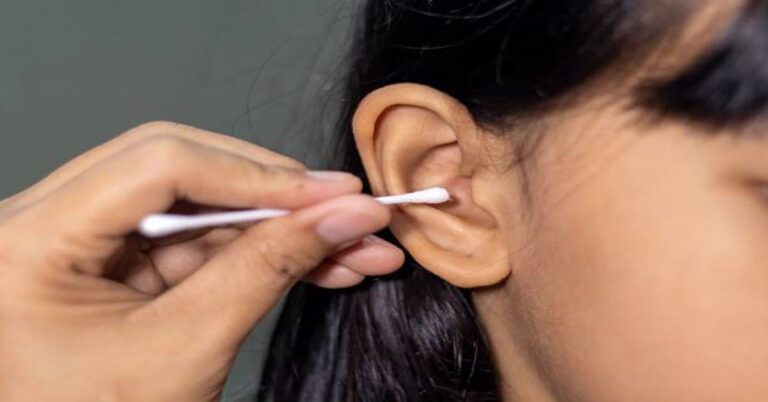
The clarinet is one of the most expressive and versatile instruments in the woodwind family. Known for its warm, fluid tone and remarkable range, the clarinet bridges worlds — from orchestral symphonies to jazz improvisations, from military marches to modern pop arrangements. Its distinctive voice can whisper softly in a concerto’s lyrical passage or explode with color and passion in a lively jazz solo.
But behind its beauty lies a fascinating journey of craftsmanship, evolution, and artistry. The clarinet’s story is centuries old, tracing its roots to early reed instruments of the Middle East before becoming a central piece of Western orchestral music. Understanding this instrument requires an appreciation of its structure, sound mechanics, musical diversity, and cultural heritage.
In this comprehensive article, we’ll explore everything about the clarinet — its origins, design, playing technique, family types, tone production, historical evolution, and its place in modern music.
1. Origins and Historical Development of the Clarinet
The clarinet’s ancestry can be traced to ancient reed instruments such as the chalumeau, a simple wooden pipe with a single reed and a limited range, used in Europe during the Baroque period. The chalumeau’s warm tone inspired early musicians, but its inability to play higher notes limited its versatility.
Around 1700, the German instrument maker Johann Christoph Denner of Nuremberg improved upon the chalumeau’s design. He added a register key, which allowed the instrument to overblow at the twelfth (instead of the octave like flutes or recorders). This innovation expanded its range dramatically and birthed the modern clarinet.
Throughout the 18th and 19th centuries, the clarinet continued to evolve, gaining more keys for improved chromatic ability and tuning precision. The five-keyed clarinet of the Classical period eventually gave way to 13-keyed models, thanks to pioneers like Theobald Boehm and Hyacinthe Klosé, who standardized the fingering system that most clarinetists use today.
By the late 1800s, the clarinet had become a mainstay in orchestras and wind bands, appreciated for its flexibility and expressive range.
| Era | Key Development | Influence on Music |
|---|---|---|
| Early 1700s | Denner adds register key | Expands playable range |
| Mid-1700s | Classical composers adopt clarinet | Featured in Mozart’s symphonies and concertos |
| 1800s | Boehm system refinement | Standardizes fingering and tuning |
| 1900s | Widespread use in jazz and orchestras | Defines both classical and swing sound |
| 2000s | Modern manufacturing and materials | Expanded use in global genres and education |
2. Anatomy and Structure of the Clarinet
A clarinet’s design might seem simple at first glance — a black cylindrical tube with silver keys — yet each part contributes crucially to its sound, comfort, and performance. Understanding its components helps clarify why it produces such a distinctive tone.
Main Parts of a Clarinet
| Component | Description and Function |
|---|---|
| Mouthpiece | Made from hard rubber or resin, it holds the reed and produces vibration when air passes through. |
| Reed | A thin cane strip fixed to the mouthpiece with a ligature. It vibrates to produce sound. |
| Barrel | Connects the mouthpiece to the upper joint; fine-tunes pitch. |
| Upper Joint | Contains tone holes and keys for right-hand operation. |
| Lower Joint | Houses tone holes and levers for the left hand. |
| Bell | Flared end that projects and balances tone, enhancing lower frequencies. |
The bore shape — cylindrical in the clarinet — plays a major role in its sound production. Unlike the conical bore of the oboe or saxophone, the clarinet’s cylindrical bore allows for a distinct harmonic series, producing its warm and woody timbre.
3. How the Clarinet Produces Sound
The clarinet is a single-reed woodwind instrument, meaning its tone is created when a single reed vibrates against the mouthpiece. The player’s breath sets the reed in motion, generating sound waves that travel down the instrument’s bore.
The clarinet overblows at the twelfth (not the octave like flutes), allowing for a three-octave range — one of the broadest among woodwinds.
The sound changes depending on:
- Embouchure (mouth position)
- Reed thickness and quality
- Air pressure and control
- Fingering and key adjustments
Players can manipulate their embouchure and breath to create a wide variety of tones — from dark and mellow in the lower chalumeau register to bright and piercing in the clarion register and shimmering in the altissimo register.
| Register Name | Pitch Range (Approx.) | Tonal Quality |
|---|---|---|
| Chalumeau | E3 – F4 | Deep, warm, resonant |
| Clarion | G4 – C6 | Clear, bright, lyrical |
| Altissimo | D6 and higher | Brilliant, intense, penetrating |
4. The Clarinet Family: Varieties and Pitch Ranges
There isn’t just one type of clarinet; rather, it’s a family of instruments of various sizes and ranges. Each type serves a different musical role.
| Clarinet Type | Pitch | Typical Use | Tonal Character |
|---|---|---|---|
| E♭ Clarinet | Higher | Orchestral color, military bands | Bright, piercing |
| B♭ Clarinet | Standard | Orchestras, jazz, solo works | Balanced, versatile |
| A Clarinet | Slightly lower than B♭ | Classical and orchestral | Warm, rounded |
| Bass Clarinet | One octave lower | Symphonies, film music | Deep, resonant, expressive |
| Contrabass Clarinet | Two octaves lower | Wind ensembles | Dark, massive, atmospheric |
| C Clarinet | Non-transposing | Early music, folk | Clear, direct |
The B♭ clarinet remains the most commonly used and is considered the “standard” clarinet. However, composers like Richard Strauss, Igor Stravinsky, and Aaron Copland often employed multiple clarinet types to add diverse tonal colors.
5. The Clarinet in Classical Music
The clarinet became an essential voice in the Classical era thanks to composers like Mozart, Beethoven, and Brahms.
- Mozart’s Clarinet Concerto in A Major, K. 622 remains one of the most beloved concertos in music history.
- Beethoven’s Symphony No. 6 (“Pastoral”) and Brahms’ Clarinet Quintet in B minor, Op. 115 showcase its lyrical and human-like tone.
- The Romantic era saw the clarinet flourish in chamber and orchestral music, often portraying tenderness, nostalgia, or spiritual calm.
In orchestras, the clarinet sits between flutes and bassoons, providing tonal balance — a bridge between woodwind brightness and brass depth. Its range allows composers to use it both melodically and harmonically, enriching orchestral texture.
6. The Clarinet in Jazz and Popular Music
No other orchestral woodwind transitioned into jazz with as much success as the clarinet. In the early 20th century, it became a cornerstone of the swing era.
Jazz Evolution
- New Orleans Jazz (1910s–1920s): The clarinet added ornamentation and improvisation over brass sections.
- Swing Era (1930s–1940s): Stars like Benny Goodman — the “King of Swing” — brought the clarinet to mainstream fame.
- Modern Jazz (1950s–present): Artists like Buddy DeFranco and Eddie Daniels kept the instrument’s relevance alive.
| Jazz Clarinetists | Style | Contribution |
|---|---|---|
| Benny Goodman | Swing | Elevated clarinet to front-line jazz status |
| Artie Shaw | Big Band | Blended classical technique with jazz expression |
| Sidney Bechet | Early Jazz | Introduced New Orleans-style improvisation |
| Buddy DeFranco | Bebop | Integrated clarinet into modern jazz idioms |
In jazz, the clarinet’s flexible pitch bending and soulful phrasing make it perfect for expressive solos and complex harmonies.
Even today, modern genres — from film soundtracks to world fusion music — continue to embrace the clarinet for its nostalgic yet timeless sound.
7. Clarinet Materials and Craftsmanship
Traditional clarinets were made from African blackwood (grenadilla), prized for its density and resonance. However, modern designs also use materials like ebony, resin, plastic, and composite woods, depending on cost and purpose.
| Material | Used For | Advantages |
|---|---|---|
| Grenadilla Wood | Professional instruments | Superior tone quality, projection |
| Plastic (ABS) | Student clarinets | Durable, weather-resistant |
| Ebonite | Intermediate level | Balanced sound and affordability |
| Metal | Specialty models | Distinct timbre, rare use |
| Carbon Fiber | Modern innovation | Lightweight, stable tuning |
Manufacturers such as Buffet Crampon, Yamaha, Selmer Paris, and Backun remain global leaders in clarinet craftsmanship, combining traditional techniques with advanced acoustical science.
8. Playing Technique and Artistry
A clarinetist’s sound depends heavily on embouchure (lip control), breath support, and finger dexterity.
- Embouchure: The lower lip covers the teeth while the upper teeth rest lightly on the mouthpiece.
- Breath Control: Constant airflow ensures steady tone and smooth phrasing.
- Fingering System: The Boehm system provides intuitive placement, allowing rapid transitions between notes.
Beyond technical precision, artistry comes from tone shading, articulation, and phrasing, giving the clarinet its emotional depth.
9. The Clarinet in Education and Ensembles
The clarinet is widely used in music education, both for its approachable learning curve and wide range of repertoire.
In school bands, wind ensembles, and youth orchestras, clarinet sections often form the backbone of the woodwinds. Advanced players graduate to smaller or lower clarinet types, building ensemble balance.
Its adaptability makes it an excellent instrument for beginners yet endlessly challenging for professionals.
10. Clarinet in World and Folk Traditions
Outside Western classical and jazz traditions, the clarinet appears in folk and traditional music across cultures.
- Klezmer (Eastern Europe): The clarinet plays a soulful, wailing voice that mimics the human cry.
- Turkish and Middle Eastern music: The G clarinet is used for expressive microtonal melodies.
- Indian film music: The clarinet appears in orchestral arrangements, often blending Western and Indian tonalities.
- Latin American music: Folk ensembles use clarinets for melodic ornamentation in dances and festivals.
This cross-cultural versatility reinforces the clarinet’s status as a universal voice of expression.
11. Famous Clarinet Works and Performers
Classical Repertoire Highlights
- Mozart – Clarinet Concerto in A Major, K. 622
- Brahms – Clarinet Quintet in B Minor, Op. 115
- Weber – Clarinet Concerto No. 1 and 2
- Debussy – Première Rhapsodie
Famous Clarinetists
| Performer | Genre | Notable Contributions |
|---|---|---|
| Benny Goodman | Jazz | Revolutionized swing clarinet |
| Sabine Meyer | Classical | Leading modern performer and soloist |
| Richard Stoltzman | Classical/Jazz | Known for crossover performances |
| Martin Fröst | Classical | Renowned for virtuosic interpretations |
| Giora Feidman | Klezmer | Global ambassador of Jewish clarinet music |
12. Clarinet Care and Maintenance
Maintaining a clarinet ensures tone stability and longevity.
Basic Care Tips
- Swab the instrument after each use to remove moisture.
- Oil keys occasionally to prevent sticking.
- Store reeds in a ventilated case to avoid warping.
- Keep the instrument at moderate humidity to prevent wood cracking.
Professional players often rotate multiple reeds and perform periodic servicing to maintain consistent tone and response.
13. The Emotional Spectrum of the Clarinet
The clarinet’s emotional range is vast — from introspective melancholy to exuberant joy. Its dynamic sensitivity and vocal-like phrasing allow it to express subtle human emotions unmatched by many instruments.
Composers exploit this expressiveness in film and theater scores to evoke nostalgia, romance, or mystery. The clarinet’s timbre sits close to the human voice, giving it a natural, relatable warmth.
14. The Clarinet in the Modern World
In today’s world, the clarinet remains a symbol of musical adaptability. It continues to evolve through technological innovations, digital sound design, and contemporary collaborations.
New compositions incorporate electronic clarinet effects, loop pedals, and cross-genre fusions with rock, funk, and world music. Its influence extends from traditional concert halls to virtual stages and soundtracks.
Conclusion
The clarinet’s journey from a simple wooden pipe to a sophisticated global instrument reflects humanity’s quest for expressive beauty. Its warm timbre, technical agility, and emotional range make it indispensable across musical traditions.Whether heard in Mozart’s symphonies, Goodman’s jazz improvisations, or folk melodies in a distant village, the clarinet transcends boundaries of genre and geography. It is an instrument that breathes human emotion — a voice that continues to sing, centuries after its birth.
FAQs
1. Who invented the clarinet?
The clarinet was developed around 1700 by Johann Christoph Denner in Germany, evolving from the earlier chalumeau instrument.
2. What is the clarinet made of?
Professional clarinets are typically made from African blackwood (grenadilla), while student models use plastic or composite materials.
3. How many types of clarinets exist?
There are several, including the B♭, A, E♭, bass, and contrabass clarinets, each serving different musical roles.
4. What genres use the clarinet?
The clarinet features in classical, jazz, klezmer, folk, and modern fusion genres worldwide.
5. Is the clarinet hard to learn?
It’s considered beginner-friendly but takes years to master breath control, embouchure, and tonal nuance.







